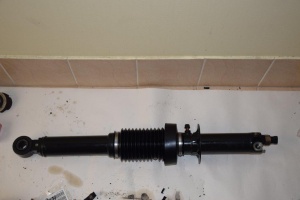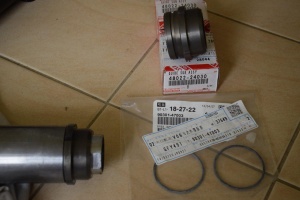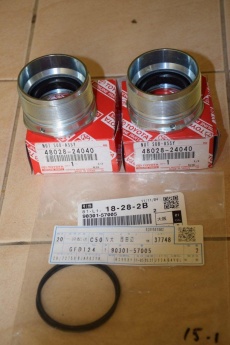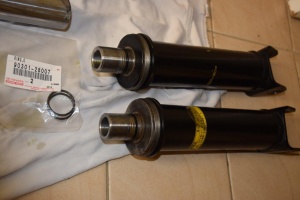Hydraulic suspension struts
Architecture
Instead of conventional springs and shock absorbers, the UZZ32 has integrated hydraulic units, which are then computer controlled.
The lower part of the assembly consists of a gas spring (accumualtor), where nitrogen under high pressure works like a conventional spring but also provides the benefit of progressive (rather than linear) spring rates.
The upper part of the unit consists primarily of a piston which allows the position of the wheel to be moved under computer control.
The "shock absorbers" (as Toyota calls them) are hydraulically connected to a central valve body, which distributes the hydraulic pressure as directed by the elelectronic suspension control unit.
The hydraulic pressure is provided by a pump which is driven by the engine.
There are also additional accumulators near the valve body and suspension pump to help buffer and smooth out the load on the system.
Maintenance
Over time, two key problems occur:
- The gas in the suspension accumulators leaks. When this happens, the spring function gradually disappers, resulting in a harsh ride as well as hydraulic "bounce".
- The seals (o-rings) in the "traditional" part of the shock absorbers wear out, resulting in fluid leakages.
The accumulators can be re-gassed, eg by installing a new valve of a suitable size and rating and the then re-filling the gas.
- replacing the existing (M5) fill screw with a needle fitting valve
- drilling and tapping the existing hole (or a new one) to fit a larger (eg schrader) valve
However, the gas may well leak out again, especially if the seal on the floating piston is worn.
The o-rings can be replaced relatively easily by disassembling the unit and installing new o-rings. Some of the internal seals are however of an unusual design and not readily available.







